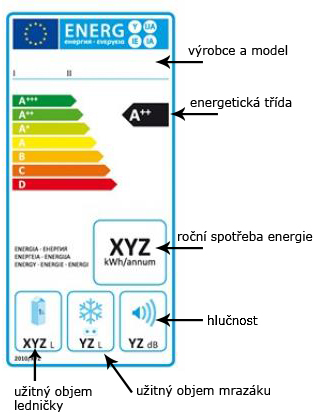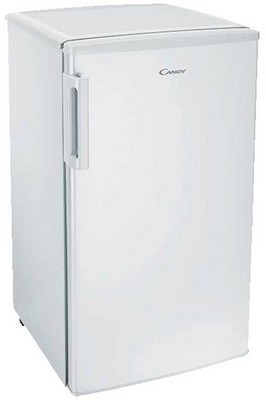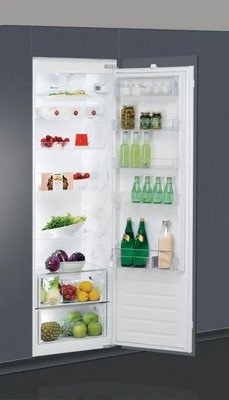How To Choose a Monoclimatic Fridge
Monoclimatic refrigerators are single-door refrigerators without a freezer. Their large volume is ideal for large households, who also own a separate freezer, or in commercial premises. A small model is suitable for a holiday home or for individuals who simply do not need a freezer. If you have a monoclimatic refrigerator and a separate freezer of the same type and manufacturer, you can put them side-by-side, similar to an American style combined refrigerator.

A few tips for choosing a monoclimatic refrigerator
The refrigerator is in operation continuously, so pay attention to its energy consumption
Maintenance is facilitated by automatic defrosting or a frost-free refrigerator with the No Frost system
Monoclimatic refrigerators without a compressor have a very low noise level
Basic parameters for choosing a monoclimatic refrigerator
Energy class and energy label
To make it easier to choose each refrigerator, there is an energy label, which you will find for each model. You will find information on energy consumption, internal usable volume, but also on its noise.
Energy Label

The energy class indicates the energy consumption of the refrigerator. Electricity consumption is derived from operation under ideal conditions, i.e at an ambient temperature of 20 ° C and 70% full. However, energy consumption can increase or decrease with respect to the set temperature, handling method or ambient temperature. Most monoclimatic refrigerators are classified in class A+ or A++. But you will also find models in the even more economical A+++ class.
Illustrative annual energy consumption of combined refrigerators by energy classes**
| Energy class | Annual consumption in kWh | Costs in CZK / day* | Costs in CZK / year* |
|---|---|---|---|
| A+++ | 161 | 2,12 | 774 |
| A++ | 220 | 2,90 | 1 059 |
| A+ | 275 | 3,62 | 1 321 |
| A | 305 | 4 | 1 464 |
* Calculated with the price of CZK 4.80 / kWh
** The energy consumption of the refrigerator is affected by volume, the type of compressor, the insulation, thickness and other parameters.
Usable volume
The advantage of monoclimatic refrigerators is their large volume. When choosing a suitable refrigerator size, as a general rule, a minimum of 70 liters of cooling space is recommended for one household member. But try to also take into account reserve space, because the refrigerator should ideally be only two-thirds full. The required size of the refrigerator also depends on other factors, above all, whether you make large purchases at once, whether you store a lot of bottles, but also how practical the internal layout of shelves and drawers.
Monoclimatic refrigerators with a volume of less than 70 liters are more commonly used as a minibar.
Refrigerators without a freezer with a volume of 70-200 liters can be used in a smaller 1-2-member household or in a holiday home.
Refrigerators without a freezer with an internal volume of around 200-300 liters will be sufficient for a 4-member household who have a free-standing freezer. Large models with a volume of more than 300 liters can be used in a large household or for those who make big purchases at once.
TIP: Freezers with the same design are made for some monoclimatic refrigerators to be sold as a set. When purchasing such a monoclimatic refrigerator and a separate freezer, you can then assemble a so-called side-by-side refrigerator resembling an American refrigerator.
Dimensions
Before ordering a specific model of refrigerator, measure the space where you want to place it and think about leaving some space around the side. Leave a space of at least 1 cm on the sides of the refrigerator and 3 to 5 cm behind the refrigerator. This way air can flow freely around it and its functionality will not be limited.
Climate class
The climate class pertains to the ambient temperature of the area in which the refrigerator will be located. If the refrigerator is in a different climatic environment than recommended, it may consume more energy and may not cool properly. There are 4 climate classes, but some refrigerators are designed for operation in multiple classes, i.e in a wider temperature range.
| Climate class | Ambient temperature range |
|---|---|
| SN (subnormal temperatures) | +10 to +32 °C |
| N (normal temperatures) | +16 to +32 °C |
| ST (subtropical temperatures) | +18 to +38 °C |
| T (tropical temperatures) | +18 to +43 °C |
Noise
Monoclimatic refrigerators tend to be just as noisy as regular combined fridge freezers, i.e their noise ranges from about 36 dB to 43 dB. Noisier models with an operating noise above 43 dB could disturb you, fortunately these values are mostly seen in refrigerators intended for commercial premises, or some wine shops.
If you are considering buying a monoclimatic refrigerator for your study, office or bedroom (for example as a minibar), we recommend a refrigerator without a compressor, which makes almost no noise and does not vibrate. These are small refrigerators and minibars with a noise level of up to 33 dB.
Note: You can find the noise level of the refrigerator on the energy label.
Possibility to change the door opening
Before buying a refrigerator, make sure which side the refrigerator door should open. It sometimes happens that the refrigerator needs to be relocated as part of a conversion or for practical reasons, so models with the possibility of changing the side the door opens is advantageous. However it’s not possible with every model, some monoclimatic refrigerators are manufactured without the possibility of changing the side the door opens from. These are mostly wine coolers, minibars and industry refrigerators.
Features and technologies
Refrigerators without a freezer can be found on the market in a significantly smaller proportion than, for example, combined fridge freezers. Due to lower sales, they are not equipped with so many modern functions and technologies. Nevertheless, you will find the most useful functions on some models and they are definitely worth considering.
Monoclimatic refrigerators
You can place a free-standing refrigerator without a freezer anywhere in the room and in any room. Their biggest advantage is their large internal volume. The absence of a freezer is solved by purchasing a separate appliance. After purchasing a free-standing freezer of the same type and manufacturer, you can create a so-called side-by-side refrigerator in the style of an American refrigerator.
Small free-standing refrigerators without a freezer have limited possibilities due to their smaller internal volume. It will therefore serve as a refrigerator for individuals or a holiday home. Many of them operate very quietly, so you can also buy them as a minibar to use in a bedroom or study.
Built-in refrigerators without a freezer are built directly into the kitchen, making them almost invisible. They are not very practical, mainly due to the smaller internal volume, and are especially suitable for smaller households, where there is room for a freezer in another room. Built-in refrigerators do not disturb the design of the kitchen and look very elegant. Thanks to the built-in kitchen unit, they are less noisy. However the selection is very limited.
Thanks to the glass doors, refrigerated display cases provide a view of refrigerated food and beverages without the need to open the door. These are appliances for commercial purposes. They can be one-door or two-door.
Frequently Asked Questions
Is a side by side combination or an American refrigerator better?
Freezers of the same design are often produced for refrigerators without a freezer. You can assemble a coordinated combination of a large-volume refrigerator and freezer, the so-called side-by-side refrigerator. However, it requires a lot of space. On the other hand, you always have the option (for example, when renovating or moving) to separate these two parts and place the freezer in a different room. You can only choose from a limited number of models.
The capacity is similar to that of an American fridge freezer, and they are very wide. You can choose the one that suits you best in design and interior layout. They often have more interesting functions. The disadvantage, however, is that their large size limits you to only being able to use them in a spacious kitchen.
When is it better to choose a freestanding refrigerator and when to choose a built-in refrigerator?
Are you planning to replace your kitchen or move in the coming years? Then a free-standing refrigerator without a freezer is better for you, which you can easily place in any kitchen. The same is true for a large family, for which the built-in refrigerator could be too small. The price, which is usually lower, also speaks for the choice of a free-standing refrigerator. In addition, you will have a choice of a plethora of models of various sizes and internal layouts.
If you are furnishing a new kitchen in which you need to save space or you have other appliances built-in, choose a built-in refrigerator without freezer. It will have the same exterior, so your kitchen will have a cleaner design without "distracting" elements. But keep in mind that built-in models have a smaller usable volume and it will be better to leave the installation to experts. The opening of the door should be chosen with regard to the other cabinets.
How to clean your refrigerator?
Each refrigerator must be cleaned regularly, as various impurities and bacteria enter the food during storage. We recommend cleaning the refrigerator about once a month with a clean cloth and a non-aggressive refrigerator cleaner. It cleans the refrigerator of bacteria and removes unwanted odors. The practical sprayer will make this easier. But natural cleansers, such as water with baking soda or vinegar, can also be effective. When cleaning the refrigerator remove all food and proceed from top to bottom. Then wipe all the shelves and walls of the refrigerator dry.
It is advisable to wash the refrigerator thoroughly approximately twice a year, and if there is icing in it, it should be removed (icing causes a significant increase in energy consumption and can also lead to damage to the appliance). Set aside a colder day for it. Take out not only food, but also shelves and drawers, which you can wash better in the bathtub, for example. Be careful to wash them in lukewarm water to prevent heat shock and warping of the shelf. Remember the seals around the door and the condensed water outlet. It is an ideal place for mold growth. Everything must then be thoroughly dried with a dry and clean cloth.
You can learn more about how to clean your refrigerator or how to remove the smell of it in our article How to take care of your refrigerator.



